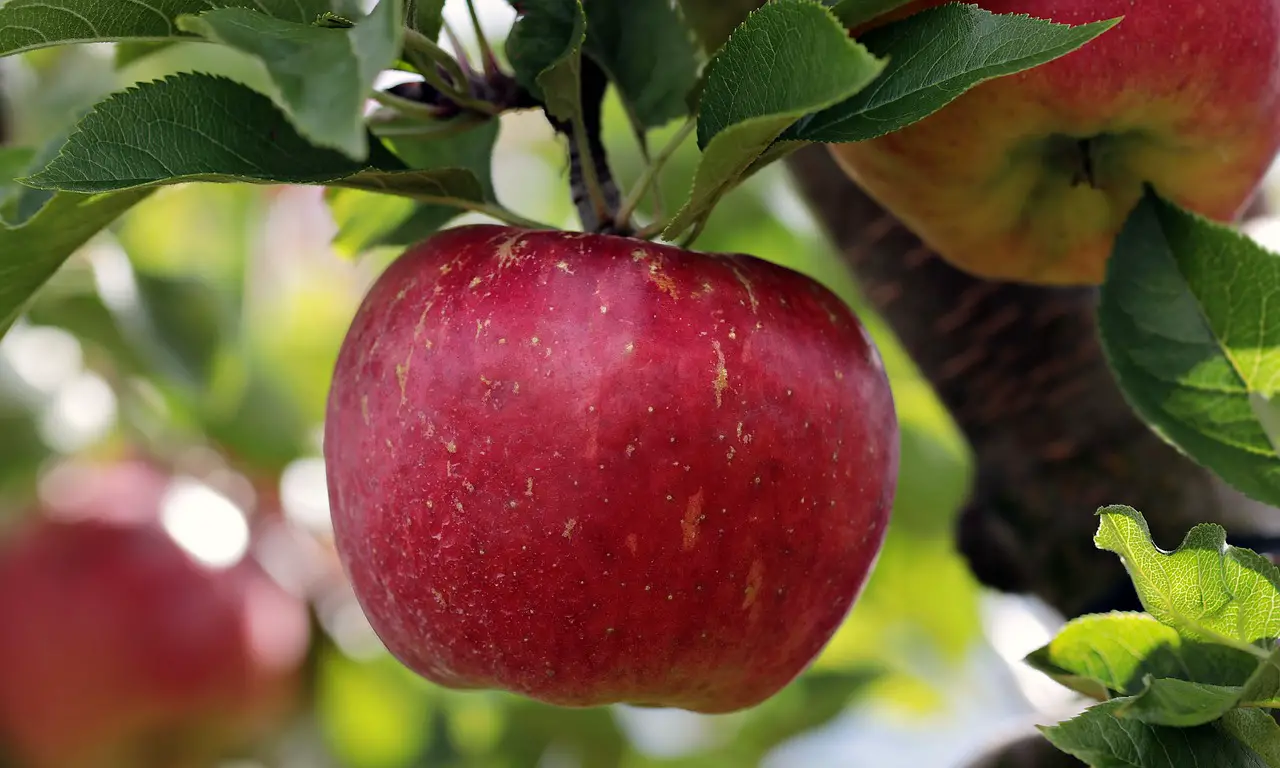Several types of trees symbolize family bonds and unity over generations, including the oak, pine, and cedar. These trees are often associated with strength, longevity, and resilience, making them powerful symbols of familial connections that endure through time.
Understanding the Symbolism of Trees
Trees have held significant cultural and symbolic meanings throughout human history. They represent life, growth, and continuity. In many traditions, trees are seen as living embodiments of family ties and connections that span generations. Their roots symbolize familial beginnings, while their branches represent the growth of a family over time.

Each type of tree carries its own unique symbolism. Some trees are revered for their strength, while others are valued for their beauty or the shelter they provide. In different cultures, specific trees are often associated with family unity and heritage. This article explores some of the most prominent trees that embody these themes.
The Oak Tree
The oak tree is widely recognized as a symbol of strength and endurance. Its deep roots signify stability and familial foundations, making it an ideal representation of family bonds. Oaks can live for hundreds of years, which further emphasizes their connection to longevity and generations.
- Strength: Known for their robust structure, oak trees withstand harsh weather conditions.
- Longevity: Many oak trees can live for over 200 years, symbolizing lasting family ties.
- Wisdom: Oaks are often associated with wisdom, representing the knowledge passed down through generations.
The Pine Tree
Pine trees are another powerful symbol of family bonds. They thrive in a variety of environments and can withstand difficult conditions. The evergreen nature of pine trees signifies resilience and eternal life, reflecting the enduring nature of family connections.

- Resilience: Pine trees adapt to various climates, showcasing the ability to thrive despite challenges.
- Eternal Life: As evergreens, pines symbolize continuity and the everlasting bonds between family members.
- Protection: Pines provide shelter and protection, mirroring the nurturing aspect of familial relationships.
The Cedar Tree
Cedar trees are often associated with strength and protection. In many cultures, they are considered sacred and symbolize a connection to spirituality and family unity. The aromatic wood of the cedar tree is also thought to have purifying properties, further emphasizing its role in fostering familial harmony.
| Tree Type | Symbolism | Cultural Significance |
|---|---|---|
| Oak Tree | Strength, Wisdom, Longevity | Common in many cultures as a symbol of family heritage. |
| Pine Tree | Resilience, Eternal Life, Protection | Often used in spiritual practices to represent everlasting bonds. |
| Cedar Tree | Strength, Purity, Spiritual Connection | Considered sacred in many traditions; represents unity. |
The symbolism behind these trees is not only rooted in their physical characteristics but also in the cultural narratives that surround them. Many families choose to plant these trees as a way to commemorate their lineage or to mark significant events in their lives. Over the years, these trees can grow alongside families, serving as living reminders of shared experiences and values.
In addition to individual trees, entire forests are also seen as symbols of connection and community. Forests represent a collective of trees that together create a stronger ecosystem. This mirrors how families come together to form supportive networks that nurture each member’s growth.

Cultural Practices Surrounding Trees
Throughout history, various cultures have celebrated their connection to trees in different ways. Rituals such as tree planting ceremonies often mark significant life events like births, marriages, or memorials. These practices reinforce the idea that trees are more than just plants; they are integral parts of our lives that symbolize our relationships with one another.
By understanding the meanings behind these trees, we can appreciate the deeper connections they represent within our families. As living entities, trees not only enhance our environment but also serve as enduring symbols of love, unity, and heritage that can be cherished for generations to come.
Other Trees Symbolizing Family Bonds
In addition to the oak, pine, and cedar trees, several other varieties symbolize family unity and generational connections. Each of these trees carries unique attributes that resonate with the values of family, love, and togetherness. Understanding these trees can deepen our appreciation for their cultural significance.

The Willow Tree
The willow tree is often associated with flexibility and adaptability. Its branches bend gracefully, symbolizing the ability to adjust to life’s challenges. This quality reflects the dynamics of family relationships, where members must adapt to changing circumstances while maintaining strong bonds.
- Flexibility: Willows can thrive in various conditions, representing the adaptability of family members.
- Grace: The elegant appearance of the willow signifies beauty in resilience.
- Healing: Willows are often linked to healing and emotional support within families.
The Cherry Blossom Tree
The cherry blossom tree holds a special place in various cultures, particularly in Japan. These beautiful trees bloom for a short time each year, symbolizing the transient nature of life and the importance of cherishing moments with loved ones. The fleeting beauty of cherry blossoms serves as a reminder to appreciate family connections while they last.
- Transience: Represents the ephemeral nature of life and relationships.
- Celebration: Cherry blossoms are celebrated during festivals, bringing families together.
- Beauty: Their stunning appearance symbolizes the joy found in familial bonds.
Trees in Mythology and Folklore
Trees have long been featured in mythology and folklore, often representing family lineage and unity. Various cultures have woven stories around specific trees that highlight their significance in familial relationships. These narratives enrich our understanding of the symbolic power of trees.
The Yggdrasil Tree
In Norse mythology, Yggdrasil is the World Tree, a giant ash tree connecting the nine worlds. This tree symbolizes interconnectedness and the ties that bind families together across realms. Yggdrasil serves as a powerful metaphor for unity, illustrating that all beings are linked through their familial roots.
The Banyan Tree
The banyan tree is revered in many cultures for its unique growth pattern. As it matures, it sends down aerial roots that form new trunks, creating a sprawling network of branches. This characteristic symbolizes the expansion of family ties and the notion that families grow and evolve over generations.
- Expansion: Represents the growth of family units as new branches emerge.
- Support: Provides shelter and protection to various life forms, mirroring familial support.
- Cultural Significance: Often seen as sacred in many traditions, reinforcing the idea of unity.
Planting Trees as Family Rituals
Many families engage in tree planting as a way to commemorate significant events. This practice not only honors individual milestones but also strengthens familial bonds. By planting a tree together, families create a living legacy that represents their shared experiences and values.
Some common occasions for tree planting rituals include:
- Births: Celebrating the arrival of a new family member by planting a tree that will grow alongside them.
- Weddings: Couples often plant trees to symbolize their commitment and shared future.
- Anniversaries: Marking milestone anniversaries with a tree planting reinforces enduring love and partnership.
- Memorials: Planting a tree in memory of a loved one creates a lasting tribute that honors their legacy.
These rituals not only enhance family connections but also contribute positively to the environment. Through the act of planting, families can foster a sense of responsibility toward nature and future generations.
The Environmental Impact of Family Trees
Trees play a vital role in maintaining ecological balance. By planting trees to symbolize family bonds, individuals contribute to environmental sustainability while reinforcing their familial connections. Trees provide numerous benefits that enhance both family life and local ecosystems.
- Air Quality: Trees absorb carbon dioxide and release oxygen, improving air quality for families and communities.
- Biodiversity: Trees create habitats for various species, promoting biodiversity within local ecosystems.
- Erosion Control: Tree roots help prevent soil erosion, protecting land and resources for future generations.
This dual significance of trees—as symbols of family bonds and essential components of our ecosystem—highlights their importance in both cultural and environmental contexts. Understanding this relationship fosters a deeper appreciation for the trees we plant and nurture throughout our lives.
The Role of Trees in Family Heritage
Trees not only symbolize familial bonds but also serve as vital elements of family heritage. They represent the lineage and history of families, acting as living monuments to ancestral connections. Many cultures have developed their unique methods of showcasing these ties through trees.
Family Trees and Genealogy
The concept of a family tree is a powerful representation of lineage. Family trees visually map out relationships between family members across generations, often showcasing the growth and expansion of families over time. This tool helps individuals understand their heritage and the connections that define their identity.
- Visual Representation: Family trees provide a clear visual of family relationships, making it easier to trace lineage.
- Connection to Ancestors: They highlight the contributions and stories of ancestors, fostering a sense of belonging.
- Preservation of History: Family trees serve as historical records that can be passed down through generations.
Cultural Traditions Involving Trees
Different cultures have unique traditions that center around trees, emphasizing their importance in family heritage. These traditions often involve specific species that carry cultural significance, reinforcing family bonds while honoring ancestors.
The Ritual of Planting
In many cultures, planting a tree during significant life events is a common tradition. This act symbolizes new beginnings and the continuity of life within families. Some examples include:
- Births: Families may plant a tree to celebrate the birth of a child, creating a lasting symbol of their growth.
- Weddings: Couples might plant a tree together during their wedding ceremony to signify their union and commitment.
- Memorials: Planting a tree in memory of a departed loved one serves as a living tribute that honors their legacy.
Festivals Celebrating Trees
Many cultures celebrate trees through festivals that bring communities together. These events often include activities centered on tree planting, conservation, and education about the importance of trees in our lives. Examples include:
- Earth Day: Many communities engage in tree planting events to promote environmental awareness and sustainability.
- Arbor Day: This holiday focuses on planting trees and educating the public about their benefits.
- Cultural Festivals: Various cultures hold festivals that honor specific trees, celebrating their significance in folklore and tradition.
The Symbolism of Specific Trees in Different Cultures
While certain trees symbolize family bonds universally, others hold specific meanings in different cultures. Understanding these nuances allows for a richer appreciation of how trees connect families across the globe.
The Fig Tree
The fig tree is revered in many Mediterranean cultures as a symbol of abundance and fertility. It is often associated with family unity, as its fruit is seen as a gift that nourishes both body and spirit.
- Abundance: The fig tree’s bountiful yield signifies prosperity and the nurturing aspect of family life.
- Cultural Significance: In various traditions, figs are considered sacred and symbolize connection to one’s roots.
The Olive Tree
The olive tree represents peace and unity in numerous cultures, particularly in Mediterranean regions. It is often linked to the idea of reconciliation among family members and communities.
- Peace: The olive branch is universally recognized as a symbol of peace, reflecting harmonious relations within families.
- Cultural Heritage: Olive trees are deeply ingrained in cultural practices and are often featured in traditional ceremonies.
The Spiritual Connection Between Trees and Families
The spiritual connection between trees and families is profound. Many cultures believe that trees act as conduits between the physical world and the spiritual realm. This belief further enhances the symbolic meaning of trees as guardians of family history and unity.
Spiritual Practices Involving Trees
Various spiritual practices incorporate trees as significant elements in rituals and ceremonies. These practices often emphasize the sacred nature of trees and their role in connecting families with their ancestors.
- Tree Worship: Some cultures engage in worshipping specific trees believed to possess spiritual powers or connections to ancestors.
- Ritual Offerings: Families may leave offerings at the base of sacred trees as a sign of respect and gratitude for their blessings.
- Storytelling: Trees often serve as backdrops for storytelling sessions where families share their history and traditions.
This spiritual dimension underscores the importance of trees not only as symbols of family bonds but also as vital links to familial legacies that shape our identities over generations.
Connections Between Trees and Family Values
The connection between trees and family values extends beyond symbolism. Trees embody the lessons of patience, nurturing, and resilience that families strive to instill in their members. Just as trees grow stronger with time, families flourish through shared experiences and mutual support.
Lessons from Trees
Trees teach valuable lessons that can be applied to family life. These lessons often revolve around growth, adaptability, and the importance of a supportive network. Here are a few key takeaways that families can learn from trees:
- Growth Takes Time: Just as trees take years to reach maturity, families also require time to develop strong bonds and relationships.
- Adaptability: Trees must adapt to their environment, just as families must navigate life’s challenges together.
- Roots Matter: Strong roots provide stability for trees; similarly, a solid family foundation is crucial for success and resilience.
- Support System: Trees often grow in forests where they support one another; families thrive best when they work together and support each other’s endeavors.
Modern Practices in Family Tree Symbolism
As society evolves, the ways in which families connect with trees also change. Modern practices emphasize sustainability and environmental stewardship alongside traditional symbolism. Families are increasingly integrating eco-friendly practices into their tree-related rituals, creating a lasting impact on both their heritage and the environment.
- Sustainable Tree Planting: Many families now engage in planting native species that contribute to local ecosystems while symbolizing their family’s growth.
- Community Involvement: Families may participate in community tree planting events, fostering connections with neighbors while reinforcing their own family bonds.
- Educational Initiatives: Families are becoming more involved in educating younger generations about the importance of trees, ensuring that the legacy of family values is passed down.
The Role of Technology in Preserving Family Heritage
In an increasingly digital world, technology plays a significant role in preserving family heritage related to trees. Digital genealogy platforms allow families to create and share family trees easily. Additionally, social media provides a platform for sharing stories about family traditions involving trees.
- Online Family Trees: Platforms like Ancestry.com enable families to build comprehensive family trees that can be updated collaboratively by members across generations.
- Social Media Sharing: Families can share their tree-planting ceremonies or celebrate milestones through social media, creating a digital legacy.
- Documenting Traditions: Families can utilize blogs or vlogs to document their rituals involving trees, preserving these practices for future generations.
Cultural Exchange and Learning
The symbolism of trees transcends cultural boundaries. As families interact across cultures, they exchange traditions and stories surrounding trees. This cultural exchange enriches our understanding of the different meanings attached to trees and emphasizes the universal themes of love, unity, and heritage.
Families can learn from one another by exploring how different cultures honor their familial connections through trees. This exchange can lead to a greater appreciation for diversity while reinforcing the common values that bind families together globally.
Final Thoughts
The symbolism of trees as representations of family bonds and unity over generations is profound. From oaks to willows, each tree carries unique meanings that resonate deeply with the values of love, resilience, and support. By understanding these connections, we can foster stronger familial ties and create lasting legacies.
As we plant trees to commemorate life events or honor our ancestors, we also contribute to our environment and future generations. The lessons learned from trees—patience, adaptability, and the importance of roots—serve as guiding principles in nurturing our families. In embracing both traditional and modern practices related to tree symbolism, we can ensure that our family heritage continues to thrive while respecting the ecosystems that sustain us all.
Ultimately, the enduring bond between families and trees reminds us of our shared journey through life. Whether through rituals, storytelling, or the simple act of planting a tree, we celebrate not only our own family histories but also our interconnectedness with nature and each other.
